In the women's game, The Hundred has been greeted with cautious optimism, but is the promise of a level playing field too good to be true? The Cricketer assesses what The Hundred can offer women's cricket, and where it falls short
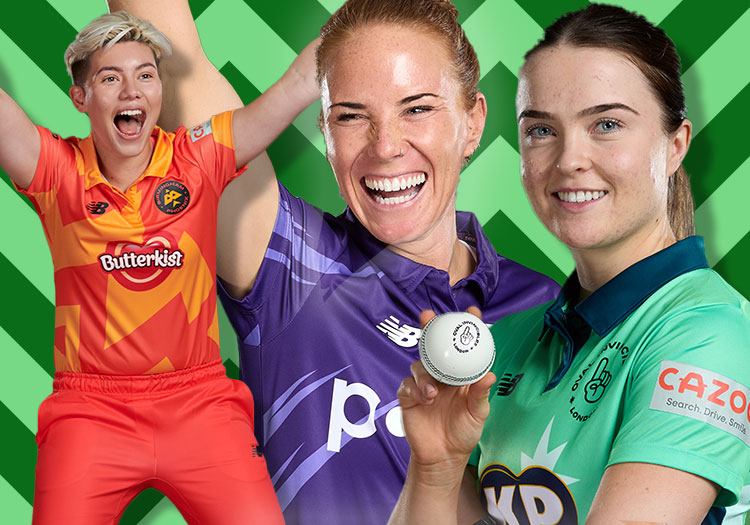

Back in September 2016, the 18 first-class counties and the Marylebone Cricket Club voted 16-3 in favour of a new, city-based, T20 competition.
Within 18 months, there were rumours of a new 100-ball format and shortly after, The Hundred was announced to the world – the latest roll of the dice from the ECB in an attempt to broaden the appeal of cricket. Its shorter format – matches are scheduled to last under three hours – is the ideal length for a family afternoon out; its simplified rules and terminology make cricket accessible to the novice spectator; its city-based teams, live music, gender neutral language and general razzmatazz aim to challenge the perception of cricket as a white, middle-class sport.
It’s proved divisive, with opponents, particularly those in the men’s game, questioning both the need for another format and the potential repercussions for the county set-up.
In the women’s game, The Hundred has been greeted with cautious optimism, but is the promise of a level playing field too good to be true? Here, The Cricketer, with the help of a selection of voices from the women’s game assesses what The Hundred can offer women’s cricket, and where it falls short.
One statistic stands out while Beth Barrett-Wild, the head of the Hundred Women’s competition, is advocating for the importance of the new competition for women’s cricket. In 2014, when she first joined the ECB as a media manager for the national team, England Women played a four-match, multi-format series against India and had three live matches on TV across the whole year.
Seven years later, England once again faced India in a multi-format series. This time around, though, there are scheduled to be 52 days of live women’s cricket across Sky Sports and terrestrial channels in 2021, and 30 of them are coming through The Hundred.
"What The Hundred brings for women’s cricket is scale and visibility, and taking women’s cricket into a mainstream space," she explains. "During the European Championship final, we had a signposting piece for The Hundred which was seen by over 30 million people. That has put the women’s game and the cricketers on a platform that’s bigger than anything the game could do on its own.
"The Hundred is the profile driver. It’s going to turbocharge the visibility of women’s cricket and brings scale and visibility that the women’s game on its own wouldn’t be able to generate. The broadcast footprint is unprecedented in domestic women’s sport."
It’s not just on TV where women’s cricket is earning additional publicity. Marketing partnerships with Lego and Topps trading cards aim to broaden the appeal of the sport, opening up further avenues to discover cricket and taking the women’s game into the school playground and beyond.
The Cricketer provides a quick and easy breakdown of how The Hundred will be played
And while some may consider these partnerships gimmicky, Birmingham Phoenix fast bowler Issy Wong is excited by them, confessing it was Match Attax football cards which piqued her interest in the sport.
"I loved collecting Match Attax as a kid," she says. "I started watching football when I was eight or nine because I was collecting Match Attax, so hopefully someone will start watching cricket because they’ve been collecting the Cricket Attax and thinking 'these are pretty cool.' It shows how far cricket has come and it’s pretty cool having a card of yourself isn’t it?
"And being on TV, if you’re flicking through channels, you might not commit to watch a whole day, but you might watch a couple of fives and think it’s pretty exciting."
Likewise, Barrett-Wild has already received considerably positive feedbacks about the Topps cards: "I had a conversation with one colleague whose young lad was desperately trying to trade to get Sophia Dunkley. He was getting rid of Ben Stokes and Jofra Archer because he wanted Sophia!"
And inspiring future generations is not the only benefit of the increased media attention which comes attached to The Hundred. Northern Superchargers head coach, Dani Hazell, believes it will both feed investment into the women’s regional structure and be an important learning experience for domestic players.
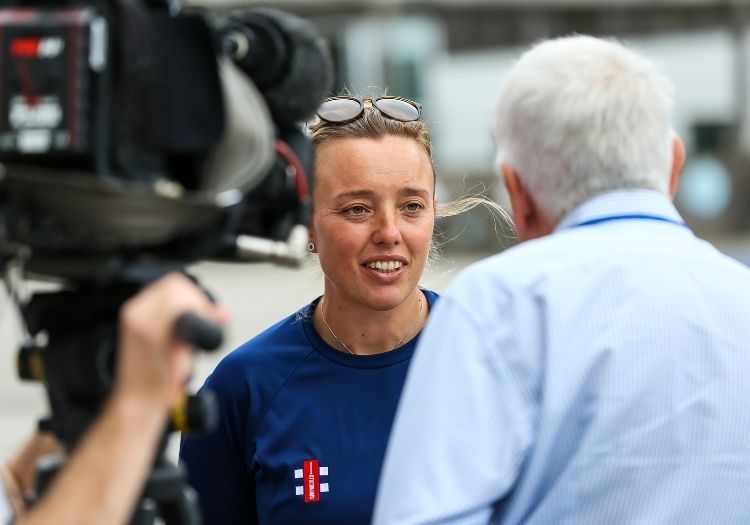
Northern Superchargers head coach Dani Hazell
"It’s going to be massive for exposure. We had a big boom after the 2017 World Cup and then the regional competition last year, so The Hundred is the next step," Hazell said. "Being on both Sky and terrestrial TV, there’s no bigger platform. The women’s regional structure is good and there’ll hopefully be more investment in that over the next few years. But The Hundred can help with that. It can broaden the appeal of women’s cricket, growing the fan base and creating investment. If you look at the bigger picture, The Hundred is good for women’s cricket.
"For the players, you have girls who’ve played in front of crowds and on TV. Equally, you have girls who’ve never had that opportunity, so the more they’re put under pressure with more eyes on them, it can only improve their game. And for these girls who’ve never been involved in DRS, there’s going to be some interesting decisions. It will be tough for the captains!"
However, there is a catch. Whereas Sky Sports are broadcasting every match of The Hundred on their main channels, regardless of whether it’s the men’s or women’s competition, and making their coverage freely available on YouTube, the terrestrial TV coverage is not so transparent.
The BBC have the rights to 18 matches during The Hundred – 10 men’s games and eight women’s games – and while all 10 men’s games will be broadcast on BBC Two, at least four of the women’s games are being squirrelled away onto the BBC iPlayer and BBC Sport website. Sound familiar? Earlier this year, several of England Women’s Six Nations matches were bumped from the schedule to accommodate such essential viewing as the 1978 film, Death on the Nile, and a re-run of Flog It!
Of course, in the era of streaming and smart TVs, it can be argued that this is a rather petty complaint. However, with The Hundred being trumpeted as a beacon of gender parity and increased visibility for women’s sport, why is it being tucked away from the public eye by a national broadcaster? Which brings us nicely onto…
One competition, two offshoots: The Hundred men’s and The Hundred women’s. Eight teams with 30 players on their staff, sharing the same kits, same branding, same hotels and same stadiums with back-to-back matches. Equal prize money for the respective champions, equal advertising and marketing, equal TV coverage. Gender neutral language, including batters and heroes of the match, in an attempt to normalise cricket terminology and promote the inclusive nature of the sport. One small step for cricket, one giant leap forward in changing attitudes towards men’s and women’s sports.
That’s the message the ECB is promoting and while we’ve already debunked the equal TV coverage claim, there is another gaping hole in the gender parity manifesto. As discussed by Izzy Westbury in The Telegraph on Monday evening, there is a huge disparity in contracts offered to the men’s and women’s players, with female players earning between £3,000 and £15,000 for participating in the five-week competition and their male colleagues receiving between £24,000 and £100,000. Now, the main issue here is not the difference in earning potential. That is a long-standing frustration in women’s sport and while it is a problem, the ECB, quite understandably, can’t be expected to rectify this issue with one tournament.
However, what is an issue is the 40 or so part-time cricketers – the ones without central contracts or regional retainers – who balance their careers as elite sportswomen with day jobs. Again, if we weren’t in the midst of a global pandemic, this issue would be minimal. But, as the ECB are jittery about preserving a Covid-safe environment, heading to work at an external venue may not be possible, a conundrum which has forced at least one player, according to The Telegraph, to choose between The Hundred and their day job. It’s hardly a shot in the arm for gender parity and promoting cricket as a viable career if players may be forced to drop out of the game to earn a living.
That being said, there are several potential benefits to the ECB’s streamlined, level playing field approach to The Hundred which have to be applauded, both for current players and inspiring future generations.
"From a player’s perspective, it’s great because the integration between the two squads means they’ll be able to learn from each other," says Barrett-Wild. "And not just the women from the men. Katherine Brunt, for example, is one of the most experienced players out there and I’m sure she’ll be sharing some of her wisdom with her male peers at Trent Rockets.
"And on matchdays, it’s just cricket. From a personal perspective, I’ve got a little boy and a little girl. I can take them to a matchday and they can aspire to play for the same team, wear the same kit, and get the same prize money. It’s just cricket."
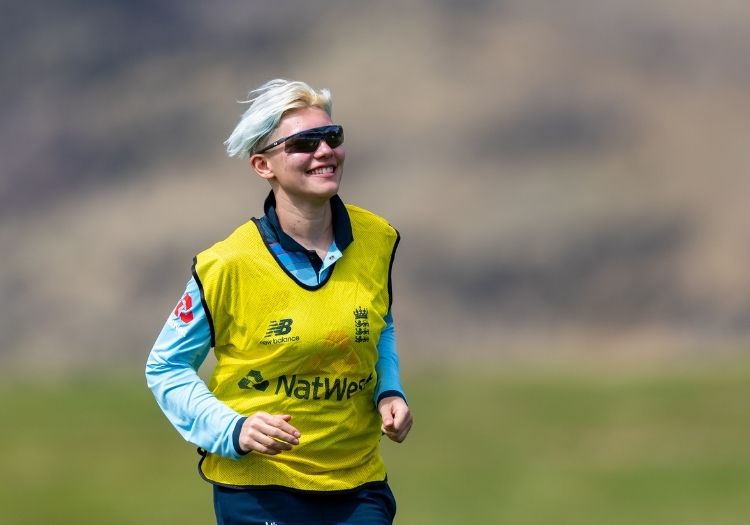
Issy Wong, who will represent Birmingham Phoenix
And as for the gender neutral language: "It’s quite a subtle change but it all adds up to not excluding anyone. Why should it be batsmen when 50 per cent of the players in the competition are women? We have to make our language more inclusive to the people playing the sport and it’s important for young girls, in particular, to see cricket is the sport for them."
"It’s just the right thing to do," continues Wong. "I think because it’s such a simple thing, it’s often been overlooked, but men and women should be treated equally. The fact The Hundred is a new competition and coming in and doing it right from the start is so important because it shows the direction they’re looking to go in. They’re saying women and men are equal, they’ve got the same branding, the same bus, the same hotel, playing on the same date - that’s how it should be and it’s good to see The Hundred putting down a marker.
"Hopefully, other sports can look at it and take the example because it’s such a positive thing. Whether it’s football where the men’s game is massively higher profiled than the women’s, or netball where the women’s game is higher than the men’s, hopefully whichever way games are swaying, they can look at The Hundred and see the direction we should be going in."
Back-to-back men’s and women’s matches at Test match-standard stadiums, with a standalone women’s match between Manchester Originals and Oval Invincibles to kickstart the inaugural tournament. It’s all quite a gamble by the ECB and one which could harm their ambitions of increasing the visibility and profile of women’s cricket.
Take the tournament opener, for example. It’s a new format, with new teams, and comparatively unknown female players. It’s a strong indicator of the ECB’s support for, and faith in, the popularity and potential of the women’s game, but will the match pack out The Oval? It’s not currently sold out whereas, interestingly, the men’s match 24 hours later is. It raises the question of what message the potentially empty seats will send out the TV audience and, perhaps more crucially, if the TV audience will mirror that in the stadium.
Equally, the back-to-back fixtures raise a couple of red flags. The women’s matches are always scheduled to take place before the men’s matches, possibly a move to appeal to families and young children with their mid-afternoon start times. But, with this also comes the loss of the prime TV slots, reducing the potential audience, and the very real possibility that, like with the double-headers during the Charlotte Edwards Cup and T20 Blast, crowds will only trickle in at the end of the women’s match.
Barrett-Wild, however, is confident in the scheduling decisions made, and insists the move to stage both the men’s and women’s games at the same stadiums was a conscious decision by the ECB.
"It was our decision to play the matches back to back and we’ve signposted from the very start when the day starts, not when the men’s or women’s match is," she says. "We’ve got one standalone matchday. Whether that changes in the future who knows, we’re not wedded to this structure. But it works well in the formative stages to put men and women on the same platform. It’s not just to tick the box.
"People talk about the impact of Covid-19 on women’s sport and whether it would halt momentum, but actually it’s given us a chance to catch up. We had planned to play some standalone women’s matches at Sedbergh or York, and I look at that now and think, 'that’s not what The Hundred is about.' It’s about co-positioning, at the same venue, with the same event experience and all the fireworks and LED boards.
"The standalone match is so important in terms of demonstrating how committed we are as a sport and organisation to put women’s cricket at the heart of everything we’re doing. It would have been easy to open with the men, but we want to show our commitment and create that platform."
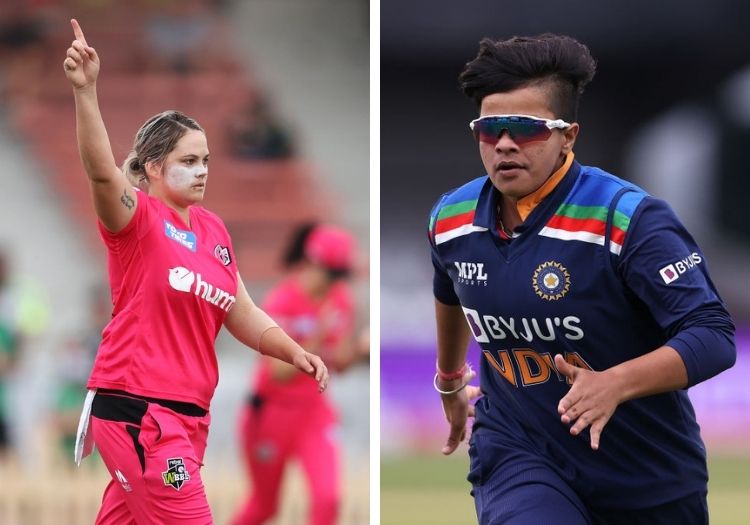
South Africa's Dane van Niekerk and Shafali Verma (India) are two of the 24 overseas players involved in The Hundred Women's
Over recent months The Hundred has been plagued by overseas stars, both male and female, pulling out of their contracts, fuelling the ridicule of its detractors and weakening the competition’s claim to 'world-class' status with every departure. Meg Lanning, Ellyse Perry, Alyssa Healy, Sophia Devine, Amelia Kerr – just a selection of 14 players to withdraw from the women’s competition to date, a talent drain kickstarted by Australia’s Rachael Haynes in mid-May.
However, beneath the negative headlines lie eight squads still brimming with overseas talent. Indian, South African and West Indian internationals have leapt at the chance to plug the hole left by their predominantly Australian counterparts. Indeed, the 24 overseas players currently contracted to The Hundred, which include South Africa captain Dane van Niekerk, West Indies skipper Stafanie Taylor and India’s Shafali Verma, boast over 2,500 international caps between them, hardly a second-string line-up. And according to Barrett-Wild, their presence in the competition offers an unrivalled opportunity for learning to our domestic players.
"We’ve had a lot of challenges with the overseas players this year, we’re trying to launch a new competition in the middle of a pandemic!" admits Barrett-Wild. "But if you look at the original line-up, the best in the world were all coming, and they’ve given their assurances that they’re coming back. And we’ve got world-class replacements like Laura Wolvaardt at Northern Superchargers, Shabnim Ismail at Oval Invincibles, and Hayley Matthews at Welsh Fire.
"It’s going to be a high-quality cricket competition which then for our domestic players, the likes of Tash Farrant or young Alice Capsey, they can test themselves against world-class overseas players and stake their claim for making the next step."
And her sentiments are echoed by the players. Wong's overseas teammates at Birmingham Phoenix are Verma and Australian duo Katie Mack and Erin Burns, and the 19-year-old believes the learning opportunities, both on and off the field, offered by The Hundred are invaluable.
"They’re players at the top of their game and in Shafali’s case, at the top of the world," Wong enthuses. "It’s a really good challenge in training to put ourselves out amongst them and see how we compare. Equally, watching them going about their business and learning how they’ve got to that point in their career. And just the way they are off the pitch – they’re so down to earth and I think there’s as much to be learned off the pitch as on it. Shafali is teaching me Hindi – I’m not very good, but we’re getting there. And I’m delighted to be on the same team as her. I bowled at her yesterday and she whacked one back and nearly killed me."
Barrett-Wild does acknowledge that the Kia Super League, the predecessor to the current women’s regional structure, performed a similar role during its four-year lifespan, regularly attracting many of the players involved in The Hundred. The KSL occupied a similar berth in the cricketing calendar to The Hundred: four or five weeks during the summer holidays, the perfect spot for attracting families to matches and a condensed playing period to appeal to overseas signings. Why then, did the ECB shelve the already successful KSL in 2019?
Barrett-Wild’s argument is that the new women’s regional structure and The Hundred form part of the same jigsaw. The former, which runs from May to September, featuring both a 50-over and a T20 competition, and only allows one overseas player per squad, offers both increased opportunities for domestic players and the ability to earn throughout the year; the latter is a drop-in competition, offering all of the perks of the KSL alongside the razzmatazz, scale and visibility of an international event.
"The KSL did a great job at bridging the gap between domestic and international cricket, and people say it’s a shame we’ve lost the KSL and The Hundred has come in and cannibalised it," she says. "We haven’t lost the KSL, we’ve gained three brilliant competitions in the Rachael Heyhoe Flint Trophy, the Charlotte Edwards Cup and The Hundred, and through the women’s regional competition we’ve got the infrastructure for players to earn all year round. The Hundred is an additional earning opportunity.
"There’s been some research from the Women’s Sport Trust, talking about the causal link between visibility and profitability and how we commercialise women’s sport. One of the key findings was that they tend to have massive peaks in interest around global events. In men’s cricket, you’ve got a long first-class season whereas historically in the women’s game you’d get peaks in interest around global events and then it would drop off. But now, this summer, you’ve got the India series and the regional competitions, then The Hundred, and then New Zealand coming over, plus the culmination of the Rachael Heyhoe Flint Trophy and Charlotte Edwards Cup. It’s a constant narrative now."
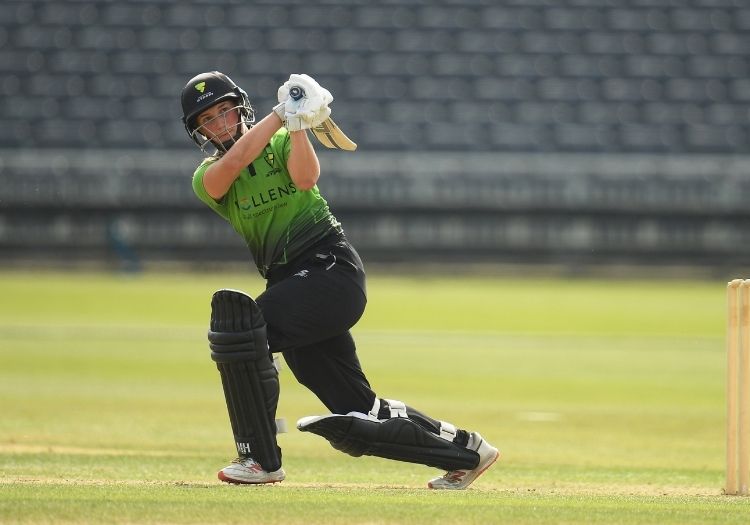
Western Storm and Wales cricketer, Alex Griffiths
When asked what The Hundred means for women’s cricket in Wales, Leshia Hawkins, the always enthusiastic CEO of Cricket Wales, said, with no hint of hyperbole: "We’ve been given an early Christmas present!"
Recreationally, women and girl’s cricket in progressing nicely in Wales, with around one third of clubs offering some form of cricket activity for female players – the national average across the 39 constituent counties of the ECB is nearer 10 per cent.
However, as you climb the ladder towards professional cricket, opportunities for Welsh players and the sport’s overall visibility begin to fade away. Cricket Wales only became involved in the Western Storm set-up in 2020 during the nationwide restructuring of the domestic game, missing out entirely on both the Kia Super League and the hype surrounding the club’s two title successes.
Even now, the new-look Storm, are yet to play a match at Sophia Gardens, understandably playing the bulk of their matches in the cricket strongholds of Taunton and Bristol. Their first match in Cardiff is scheduled for August 24 against Thunder, 12 months and 13 matches since their formation. And it’s not unusual for South Wales to be overlooked. After all, England Women have staged international matches across the border just twice, a T20I against Australia in August 2015 and an ODI against South Africa 12 years prior.
Having a Cardiff-based side in Welsh Fire and four matches at Sophia Gardens is, therefore, a huge deal for Cricket Wales, who, through The Hundred, have a platform for elite cricket on home soil.
"Glamorgan weren’t involved in the Kia Super League-era Western Storm, so we’re relatively late to the party," admits Hawkins. "Western Storm are playing in Wales for the first time at the end of August, which is exciting, but for us in Wales to have [The Hundred] in our back garden and all of the games in Cardiff, I’m delighted. It’s the Olympic phrase – inspire a generation. It was important to both Glamorgan and Cricket Wales to have the Welsh identity and it’s so unique within women’s cricket to have a Welsh brand."
Of course, sceptics may question why Cricket Wales didn’t just lobby for a regional side of their own during last year’s restructuring. However, while that is a plan for the future, according to Hawkins there simply isn’t enough depth in Welsh cricket to sustain a competitive side. Instead, the platform offered by The Hundred and the opportunity to champion local players like Alex Griffiths under a Welsh flag, will hopefully be the first step on the journey to getting a Welsh regional side in the top tier of domestic cricket.
"I would love a Wales representative side in the Rachael Heyhoe Flint Trophy but really bluntly, the depth isn’t there," Hawkins says. "It should be the goal. We’re a major county – only Yorkshire and Lancashire, I think, can beat us for number of clubs. It’s our aim, whether it’s two years, five years, or ten years, but I think the number of teams right now is right to ensure it’s best versus best.
"The dream is Alex Griffiths hitting the winning runs in the final and being handed a Welsh flag like an Olympian. I want another 150 Alex Griffiths’. It’s great to have the overseas [players] like Hayley Matthews but a local Welsh player is another story to tell and a role model to show girls you can make a living as a domestic athlete. There are loads of local guys in the Glamorgan squad, like Kiran Carlson, so to mirror that with Alex Griffiths would be amazing."
Subscribe to The Cricketer for exclusive content every day: The inside track on England's Test tour with George Dobell in Pakistan, award-winning analysis, breaking news and interviews and the only place for in-depth county coverage all year round. Plus: An ad-free app experience at your fingertips. Subscribe to thecricketer.com today for just £1.